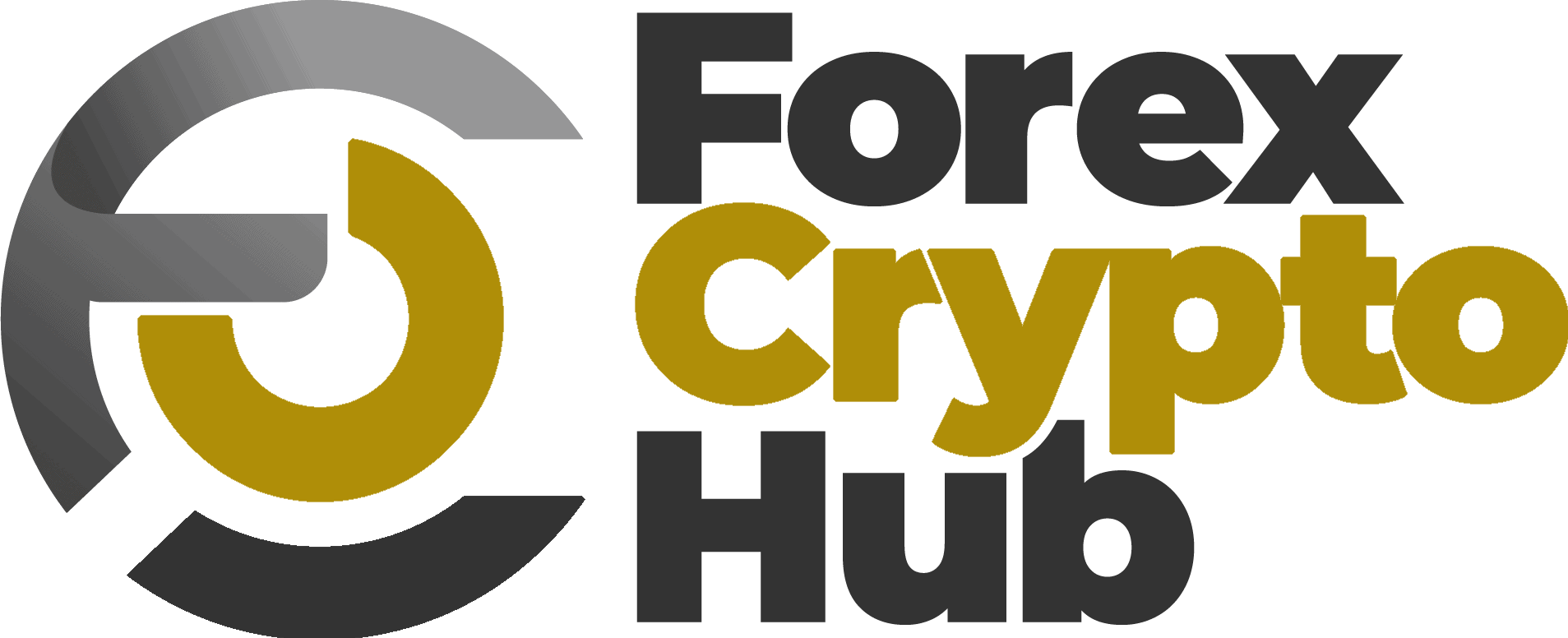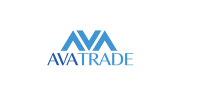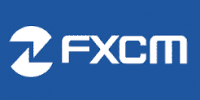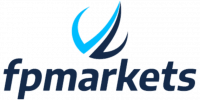The forex market is a global marketplace where the exchange of one fiat currency against the other is carried out. Simply put, it is a market where you can trade currencies. You may be thinking about investing and how to start trading Forex. Learn how to get started with these 7 simple steps!
- Step 1: Learn Forex Trading Basics
- Step 2: Choose a Forex Broker
- Step 3: Open an Account
- Step 4: Fund the Account
- Step 5: Download a Trading Platform
- Step 6: Learn to read forex charts
- Step 7: Start live trading
The forex market is the biggest and the most liquid asset market globally. In the forex market, currencies are traded in pairs like the EUR/USD pair.
One significant aspect of the global forex market is that it has no single central market for the exchange. Instead, trading is done online and over the counter.
What this means is that forex transactions occur through a network of computers of traders around the globe instead of being managed from one particular central exchange.
The forex market also functions 24 hours a day and five days a week. In this Article you will learn how to start trading Forex.
3 Different ways to trade forex
There are three types of the forex market and these are the Spot Market, the Forwards and Futures Markets.
1. The spot market
When people talk about forex trading, they are mainly referring to the spot market. The forwards and futures markets are mostly utilized by companies who want to hedge their forex risks against a specified future date.
In the spot market, you buy and sell currencies according to their pricing differentials. The price of a currency at any given time is determined by forces of demand and supply determined by factors like differences in exchange rate, economic performance, and more.
2. Forwards and 3. Futures markets
As opposed to the spot market, the forwards and futures markets don’t trade real currencies. They trade contracts that stand for claims of a specific type of currency at a specific unit of price and a settlement future dates.
How to Trade Forex
Forex trading is not particularly difficult especially if you already know how to use computers.
Yet, your long-term success as a forex trader depends on whether or not you make consistent profits.
This is why learning how to trade forex as a beginner is essential. To help you succeed in your trading career we have provided useful tips and steps on how you can start trading forex successfully.
Step 1: Learn Forex Trading Basics
To Learn how to start trading forex the first thing you need to do is to learn the basic forex terms. We have provided those terms and their meanings here:
Base currency: The base currency is the currency you want to sell.
Quote currency: The quote currency is the currency you want to purchase.
Long position: is when you purchase the base currency and sell the quote currency.
Short position: is when you have to purchase the quote currency and sell the base currency.
Bid price: the price at which a forex broker is willing to purchase and sell a quote currency. Your bid is the best price you’re happy to sell your quote currency.
Ask price: or the offer price is the price at which a broker is willing to sell a base currency to purchase a quote currency. The ask price is the best price you’re happy to purchase a currency.
Spread: is a difference between the bid price and the ask price.
Spot Forex: is the type of forex trading that involves purchasing and selling of the actual currency.
CFD: means “Contract for Difference”. It is a contract utilized to represent the price movement in the financial market. So, in a forex market what this means is that you speculate on price movements instead of purchasing and selling real money.
Pip: The pip is the base unit of a currency pair or 0.0001 of the quoted price.
Margin: is the amount of money you have in your trading account when opening a trade.
Leverage: is the amount of money you borrow from your forex broker to boost your trade volumes. If your broker offers a leverage of 1:10 and your account balance is 1,000 dollars, what it means is that you can trade a position size of up to 10,000 dollars. Leverage will boost your profits if you place a successful trade. It will equally increase your risk if you place a losing trade.
Step 2: Choose a Forex Broker
There are many online forex brokers that provide forex trading services. You will be trading on the platform that your forex broker offers.
So, working with a reputable forex broker is your key to succeeding in the forex market.
You need to do some upfront research to choose a reputable broker and one that is the best for your trading needs and goals.
Reputable Forex Brokers
Ensure that the brokerage is operating under regulatory surveillance of a major regulatory body. A broker that willingly registers with the government for oversight is demonstrating transparency and honesty.
Another thing you need to check with your broker is the number of financial products it offers.
A broker that offers multiple products including securities and commodities, for example, is demonstrating that it has a large client base.
Also, verify the broker’s trading charges. Do they have any hidden trading charges? What are the transfer and withdrawal costs?
Check the company’s customer support. Can you easily get help when you need it through different channels including email, phone calls, online, contact page, real-time chat, and more.
Step 3: Open an Account
The majority of forex brokers make account opening very easy.
As soon as you have decided on a suitable broker, visit the broker’s website, and open an account.
Most brokers allow you to open a demo account or practice account to allow you to get a good grasp of how the site works before you can invest your real money. Ensure you start first with a demo account.
After opening your account, the first step is to activate your account.
The forex broker would normally send you an email with a link you can click on to activate your account. Once you’ve done that, you can start to trade.
Demo trading is the best way to prepare yourself and learn how to trade from scratch.
It is risk-free and helps you to familiarize yourself with how the market works before investing your real money.
Ensure you start with a demo trading before you can start trading with live accounts. first and only then enter live trading. The results will speak for themselves.
Step 4: Fund the Account
When you’ve got a good grasp of how the market works, the next thing you do is fund your account to start trading with real money.
This money you deposit for trading is referred to as margin.
However, most brokers offer leverage that you can use to boost your trading account. The leverage ratio offered differs from broker to broker and from one jurisdiction to the other.
While trading with leverage can boost your profit if you make positive trades, be aware that if trades go against you, it can equally maximize your loss.
So, use leverage with caution and ensure your broker offers negative account balance protection.
This ensures that you don’t have a loss that exceeds the amount you have in your margin account and owe your broker.
The funding method varies from broker to broker and anytime you want to withdraw funds from your trading account, you’d normally do it through these same methods.
Top funding methods offered by Forex brokers
- Credit/Debit Card
- Neteller
- Skrill
- WebMoney
- Bank Wire Transfer
- Bitcoin
- Fasapay
- vLoad
- SticPay
- PayPal
Step 5: Download a Trading Platform
There are different types of the trading platform available for forex trading. A good number of online brokers support the two most popular trading platforms- MT4 and MT5.
You can either use them as web traders or download them from the website of the developer for free and install it on your PC and mobile device to start trading.
Many brokers equally offer a premium proprietary trading platform that you can use. The broker’s website should provide easily accessible information you can use to download these platforms.
Besides selecting a broker, check what trading software and platform they offer. The trading platform is your core trading feature and the main tool you need for your trading activities.
Therefore, ensure that the platform has the following elements:
Does it show correct price quotes? Can you easily transfer data without hiccups? Ensure that it also has a fast order execution. The trading platform also needs to provide real-time information and when you need it.
Step 6: Learn to Read Forex Charts
Chart types
The platform should integrate different types of charts which include a Line chart, bar chart, and candle chart. These charts are commonly in live forex charts. MetaTrader platform allows you to toggle between these chart types:
Line chart

A line chart links up the closing prices of your chosen time frame. A daily chart for instance will link up the daily closing price. It is the most rudimentary type of forex chart and gives you an idea of an overall trend without getting to specifics like the two other chart types.
Bar Chart

The bar chart illustrates the bar for every time period you view and the trader is viewing.
Thus, if you’re looking at a daily chart, every vertical bar is a representation of trading that occurred in a single day.
It is much more advanced than the line chart and offers the trader insight into the opening, high, low, and closing (OHLC) prices of the bar.
The left dash stands for the opening price and the right dash stands for the closing price.
The high of the bar stands for the highest price of currency trading with your chosen time period.
Likewise, the low end of the bar represents the lowest price the currency traded within your selected time period.
The green bars represent buyer bars, while the red bars represent the sellers’ bar.
This way the bar helps you to spot whether it’s the buyers or sellers’ group that is controlling the market.
Candlestick Chart

Candlestick charts like the bar charts also represent the opening, high, low, and closing prices of a particular time period.
Nevertheless, candlestick charts contain a box that separates an opening price from a closing price. This box is referred to as the body of the candlestick.
Candlestick charts are the most widely used forex chart globally because of its attractive appeal. They also come with different types of price action patterns that appeal to traders.
Step 7: Start Live Trading
As we stated earlier in this post, before you start committing real money into trading, ensure you have familiarized yourself with how to properly open and close a position using a demo account.
This will save you from making avoidable mistakes. As soon as you know how to open and close trade positions and can read and understand forex charts you’re ready to start trading.
Long and Short Positions
When you make an initial trade in the forex market, you enter into a position.
This means you’ve effectively taken a position on the future direction of the exchange rate of the currency pair you made a transaction in.
You can add to that position by making additional transactions in the same direction or reduce that position by closing out existing trades.
Taking a Long Position
A long position is when you buy a currency with an anticipation that it would increase in value and you can make some gains when you subtract your purchase price from the selling price.
If you purchase the euro and sell the dollar, it is represented as EUR/USD.
What it means is that you are taking a long position in Euro. These trades are illustrated in the chart below.
Taking a Short Position
This is when you sell a currency because you think that it will decrease in value. So, you want to sell it in order to purchase it back when the price falls. The difference between these new purchase price and the selling price becomes your gain.


Conclusion
Just like other financial markets, trading forex involves risk. You gain when you open a trading position that increases in value. In the same way, you incur losses when opening a position that loses value.
As long as you have an open position, any gain or loss incurred will not be realized. They only become effective once you close your position. Learning how to start trading forex may not be easy but with this guide it is possible.
Leverage can boost your risk and rewards at the same time depending on the direction your trade goes.
The best way to succeed as a trader is to only enter a trade that fulfills your minimum risk/reward ratio.







